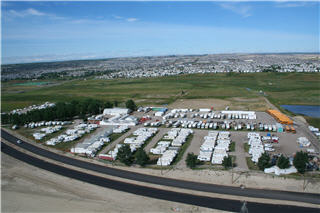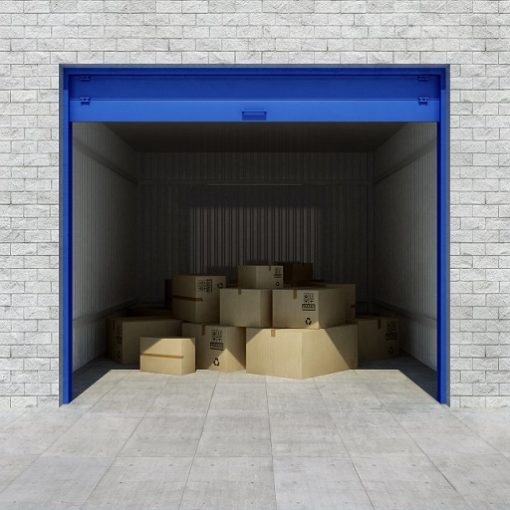Why a Storage Unit Works for Fulfillment Logistics
Managing order fulfillment from a commercial space can add significant overhead for small businesses. Therefore, using a self-storage unit offers a cost-effective, flexible alternative. In other words, it allows businesses to process inventory and handle outbound shipments without investing in warehouse leases or office space.
Businesses that operate remotely or online often face storage limitations at home or in shared offices. As a result, moving stock to an external unit provides a clear separation between workspace and inventory. A unit at a secure location also makes it easier to control inventory and plan for growth. With the right setup, order processing can happen efficiently within the confines of the unit.
Selecting the Right Unit Size and Type
The layout of a mini fulfillment centre depends heavily on the unit dimensions. A small operation might function inside a 10×10 space, while a business with bulkier stock or higher volume may need 10×20 or larger. Secondly, climate considerations come into play. For sensitive products, climate-controlled units reduce the risk of damage due to humidity or temperature swings.
When comparing options, using best storage in Calgary gives access to features like drive-up access, camera surveillance, and flexible operating hours. These characteristics support day-to-day fulfillment workflows, especially when dealing with frequent courier pickups and supply deliveries.
Planning Zones Inside the Storage Unit
Efficient layout begins with clear zoning. That is to say, dividing the unit into receiving, inventory storage, and order packing sections prevents confusion and speeds up daily tasks. Adjustable shelving and labelled bins help create an organized stock area.
For instance, assigning one wall for incoming items ensures that each delivery is checked before being shelved. In addition, a dedicated workbench for packing materials allows for streamlined assembly and dispatch of customer orders. Each square foot of the unit must serve a distinct function to maximize usable space.
Inventory Management and Software Tools
Even in a small fulfillment setup, digital tracking tools are necessary. Barcode scanners, cloud-based inventory software, and order management systems maintain accuracy and reduce time spent searching for products. As a result, fewer mistakes occur and operations stay lean.
Order tracking tools can integrate directly with online platforms and shipping carriers. For example, printing labels and scheduling pickups becomes a two-minute task instead of a manual process. These systems also make it easier to forecast restocks and avoid overselling.
Receiving and Shipping Logistics
Storage facilities that support commercial use often accommodate parcel deliveries and pickups. That is to say, shipments can be received directly at the facility, logged, and moved into inventory. For outbound logistics, couriers can be scheduled to collect packaged orders during set hours.
Efficient processes require consistent organization. For example, boxes and envelopes should be stored near the exit, and completed orders should be separated from pending tasks. Labeling and batching orders ahead of time reduces confusion during pickup windows.
Storage Compliance and Operating Guidelines
Business operations inside storage units are subject to specific terms of use. While inventory management and packing are generally allowed, public foot traffic, permanent office setups, and hazardous materials are not. Therefore, reviewing the facility’s policy is critical before moving in.
Many companies operate their fulfillment process within the bounds of local regulations by keeping activities non-public and contained. This includes using the space strictly for storage, sorting, and preparing shipments—not conducting transactions or hosting customers onsite.
Space Optimization Techniques
Every shelf, bin, and corner must support order flow. In addition, stacking items vertically rather than horizontally often frees up floor space. Modular shelving systems, rolling carts, and collapsible bins allow for flexibility as operations scale.
Proper lighting, clear aisles, and visual inventory markers reduce errors and improve productivity. That is to say, workers can move through the space efficiently even as inventory levels rise. Rearranging the layout quarterly helps prevent congestion and adapt to changing product lines.
Scaling Your Setup Without Relocating
Growth in order volume does not always mean relocating to a new facility. For instance, adding a second unit in the same location can accommodate overflow. Using separate units for seasonal stock or packaging supplies allows for division without disrupting your main inventory area.
Similarly, rotating stock based on demand helps preserve space for best-selling products. Units that support commercial storage, like self-storage in Calgary, often have flexible options for adding or resizing units as needs change. This makes it easier to scale without lengthy commitments or moving operations.
Fulfillment Flow and Repetition
Establishing a routine for picking, packing, and dispatch is key. That is to say, a repeatable system improves consistency and reduces mistakes. Daily tasks should follow a defined order, such as inventory count, batch processing, packing, and scheduled pickup.
Using printouts or checklists ensures that no steps are missed during busy periods. Workflows can be adapted over time, but the core principles should remain stable. The more consistent the process, the less effort it takes to train helpers or manage peak periods.
Physical Security and Risk Reduction
Security is a concern for any business handling goods. As a result, many storage facilities offer surveillance, gated access, and individual alarms. When combined with good practices like password-protected apps and digital logs, the risk of loss is minimal.
Additionally, keeping expensive items out of sight, labelling only internally, and changing access codes periodically all help reduce exposure. Clear labeling within the unit itself should avoid advertising high-value items to external observers.
Transportation Coordination
Some fulfillment centres use third-party couriers, while others rely on direct customer delivery. Either way, proximity to major roads and carrier hubs saves time. That is to say, choosing a facility with convenient access affects fulfillment reliability.
To avoid missed pickups, it helps to work with regular drivers or scheduled carrier visits. Properly sealed, pre-labelled packages should be ready at the same time each day to streamline collections and maintain predictable delivery timelines.
Evaluating and Adjusting the System
Regular reviews highlight bottlenecks or unused space. For instance, monthly audits can reveal which stock moves the fastest and which shelves remain underused. In addition, seasonal shifts in demand might require layout changes or unit expansion.
Tracking order volume, return rates, and storage cost per item allows better decisions going forward. The key is not just to store efficiently, but to align the physical space with actual sales performance.
Equipment and Supply Storage
Aside from products, the fulfillment centre must also store packaging materials, tools, and printed documentation. Bins for tape, scissors, thermal labels, envelopes, and receipts should remain well-stocked. That is to say, lacking materials mid-shift causes unnecessary delays.
A single cart or shelf near the packing station should hold everything required for outbound shipments. Extra supplies can be stored in overhead space or behind inactive stock to avoid cluttering high-traffic zones.
Division of Labour and Roles
In larger setups, assigning roles helps prevent confusion. One person may handle incoming deliveries while another packs orders. Even in solo operations, blocking out time for specific tasks improves efficiency.
Checklists for each role or shift simplify onboarding temporary help during busy seasons. Shared access to inventory software also allows teammates to stay aligned on real-time changes and order priorities.
Environmental and Legal Considerations
Businesses working in storage must account for local waste disposal laws. That is to say, empty boxes, bubble wrap, and printer materials should be disposed of responsibly. Facilities typically provide guidelines on what waste is acceptable onsite.
Depending on the business type, insurance may be required. Coverage for stored goods and commercial operations should be discussed with providers before launch. Keeping digital copies of documents helps in case of claims or audits.
Storage as a Business Tool
Using a storage unit for fulfillment is a strategic choice—not just a workaround. It allows business owners to manage costs, control inventory, and remain flexible. With proper systems in place, a well-run unit supports business growth and operational control long before larger investments become necessary.
For support getting started with a fulfillment setup inside a unit, contact County Hills Storage.




